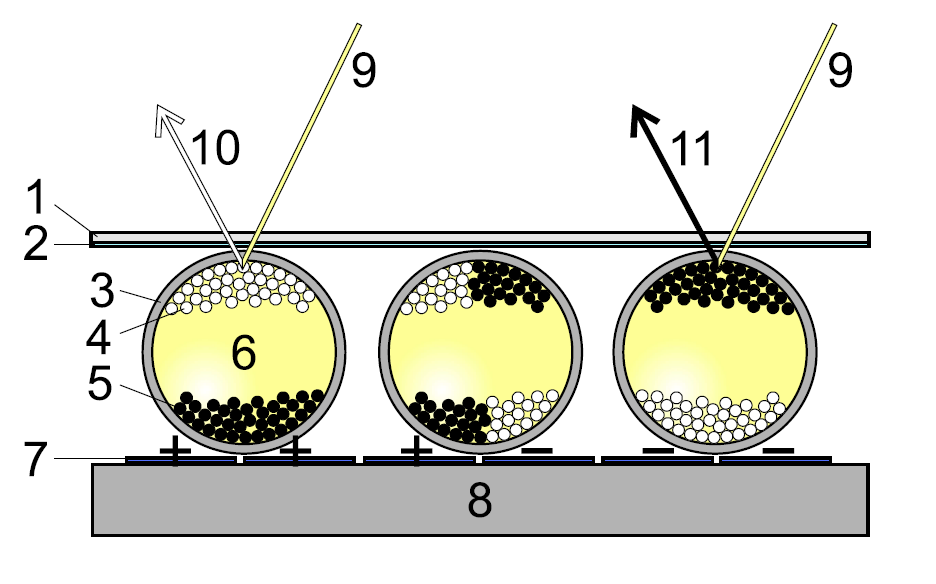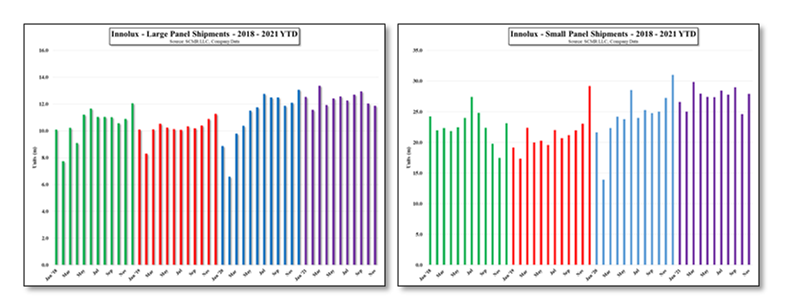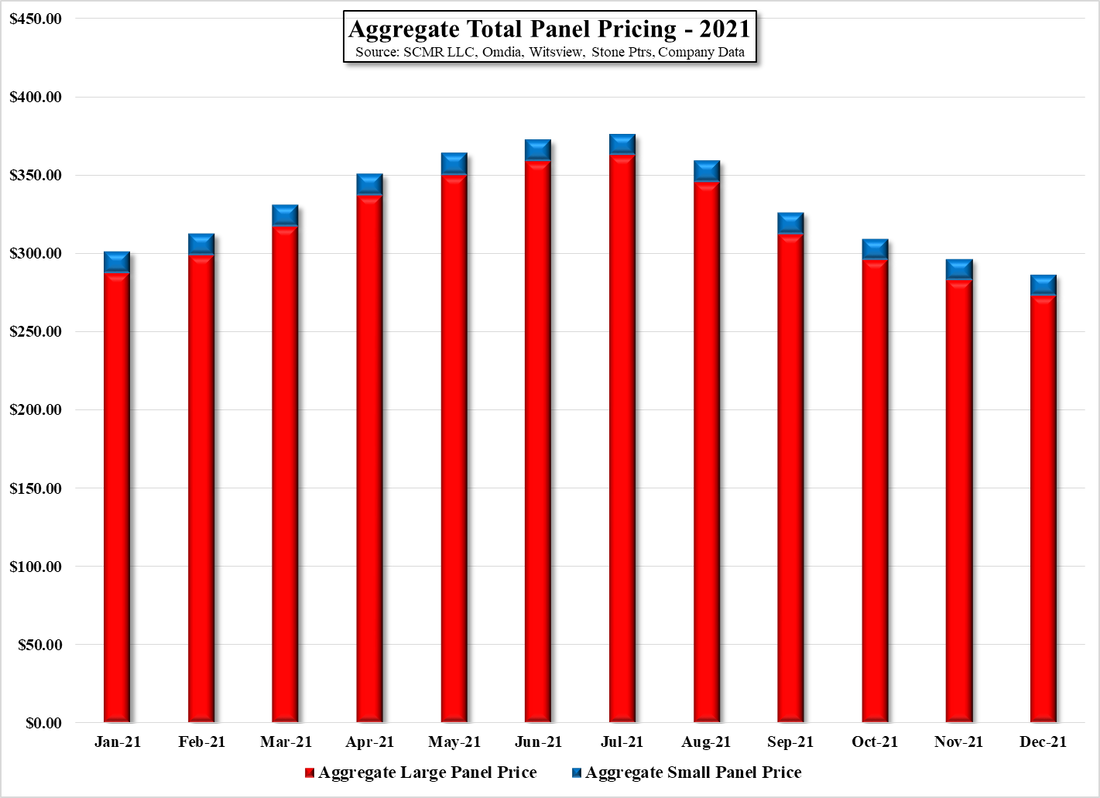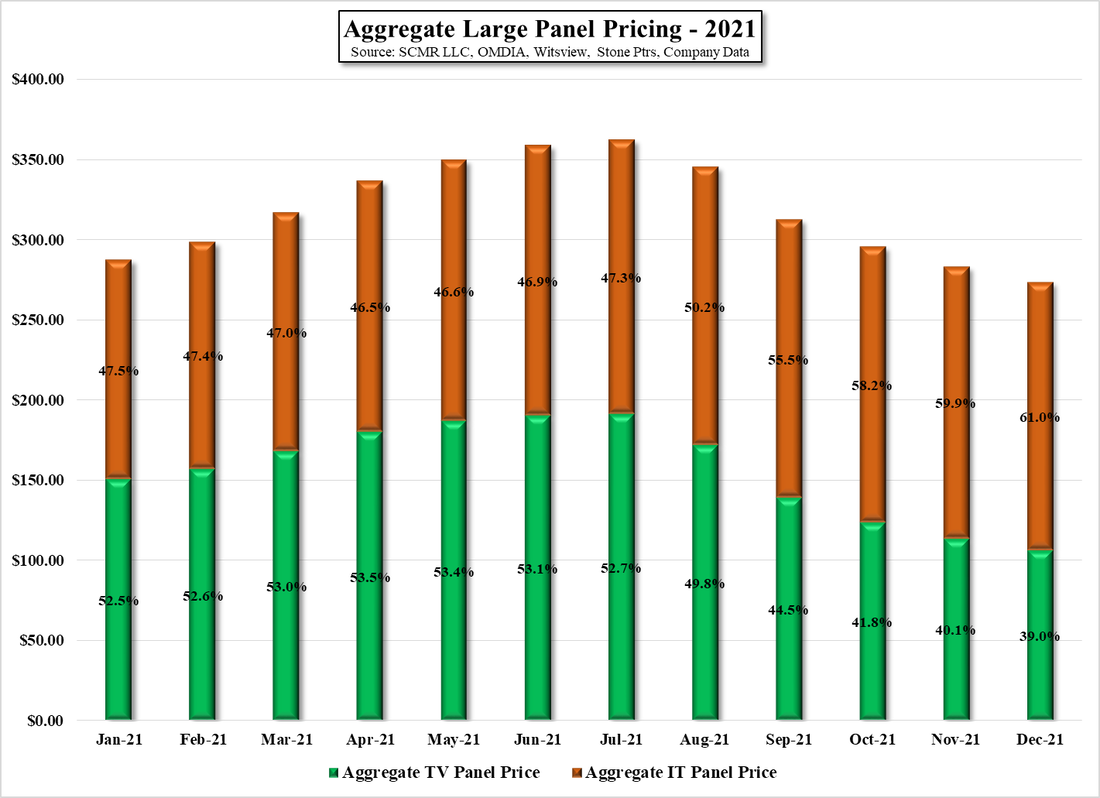Fun With Data – Panels In Pictures
The issue remains as to whether the IT panel price declines can be slowed by limiting utilization rates, but that takes a coordinated effort that not all panel producers will agree is the right method, and coupled with slower IT device demand, we expect it will take a few months of further price declines to make some panel producers realize that the cost of lower utilization in the short-term is less than the cost of a protracted downturn in the panel industry, especially during the seasonally slow 1st quarter. Unless component and silicon cost increases begin to abate as overall CE demand slows, panel producers will have a difficult time passing on cost increases and will likely have to absorb much of those increases while prices decline, making for a relatively weak 1Q and possibly 1H. If some balance can be reached before the holiday build period, there is a chance that the display space could see some growth, but display producers will likely be back to a more ‘negotiable’ mindset by the end of 1Q, which could help to lower CE device pricing and stimulate at least some demand in the 2nd half. Still lots of unanswered questions about the CE space, but then it is still January…



























 RSS Feed
RSS Feed